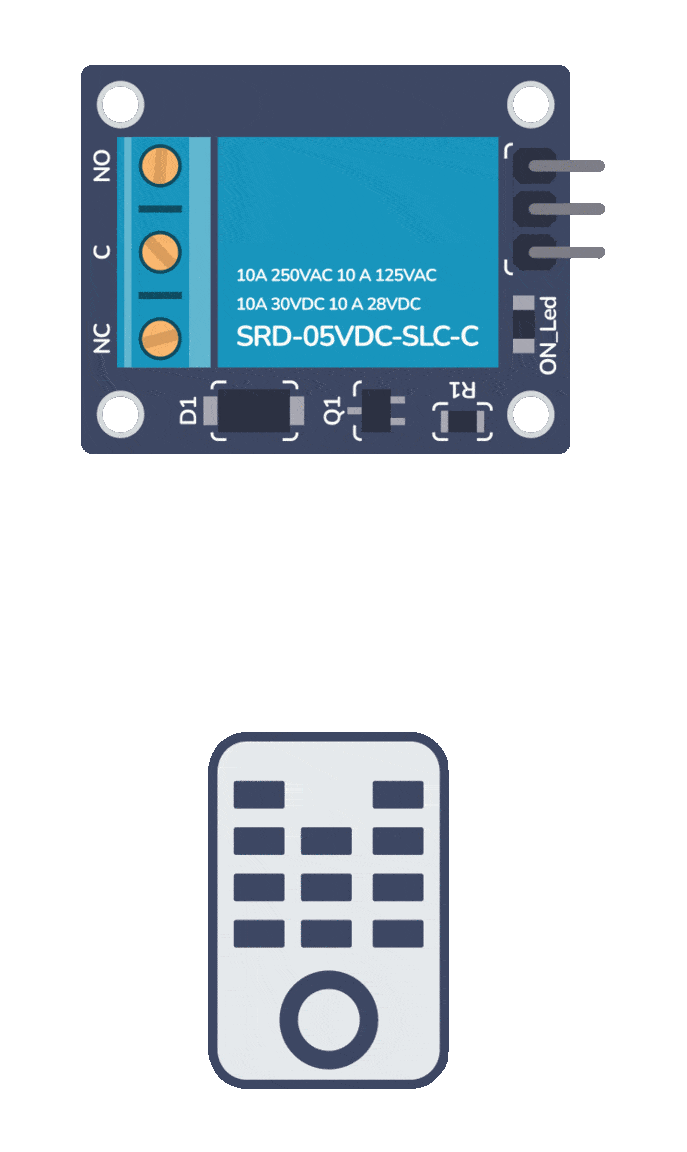I put together this Voltage Unit (VU) meter using LEDs on a breadboard the other day. It only has 4 LEDs, but can easily be expanded to more:
It’s basically a simple display for showing a value. It’s originally for showing signal level in audio circuits, but there’s no reason you can’t use it to show temperature, rain intensity, light level, or whatever other value you are measuring.
In the video above, I added a potentiometer as a voltage divider between 9V and 0V, so that the output would be somewhere in between. This way I could easily test the VU meter.
If you want it to show audio level or any other signal with very low voltage, replace the potentiometer with an amplifier.
Here’s the circuit diagram:

The Qs are NPN transistors. I used BC547.
D1-D3 are standard diodes. I used 1N4007.
R1 to R4 are there to limit the current to the LEDs, and I used 1k.

Build Something Useful This Evening
This gadget lets you use any IR remote-control to control your lamp, garden lights, heater oven, garage door, or anything else.
R5 to R8 are there to limit the current through the transistors. I forgot what I used, but anywhere from 1k to 10k I think should work.
The potentiometer I connected between 9V and 0V. And the middle pin I connected to the “Input Voltage” port.
If you want this, but think there are too many components, an alternative is using the LM3914 IC.
Have you built this circuit or something similar? Let me know in the comments below!
More Circuits & Projects Tutorials

Build Something Practical This Evening
Download this tutorial that shows you step by step how to build an old-school USB charger for your mobile.


Thanks for the article! I’d like to know, by the way what kind of Input Voltage can be used for this circuit? What should be it’s power?
Hi, probably from around 1V to 4V. You can try and experiment.
Tell me plz, can I use variable resistor as a switcher like you used in ur circuit above?
Yes, I’m using a potentiometer in the video above, so that’s possible.
I once built this audio level indicator for my 100w power amp. I used signal diodes 1n4148 for D1 to D3. The didn’t last , leaving only one LED lighting on signal input. I think these normal diodes will solve the problem. Thanks for
Great =)
I had best success with 1K resistors up top and 10K resistors on the bottom. I used 4007 diodes. As a VU meter it gave me 3 LEDs of usable data on a Chromebook headphone output. I also used it as a stepped voltage indicator by placing a potentiometer on the input and just inputting DC. It worked well enough to assign to a class of 14-18 year olds.
Thanks for sharing, Jaime!
How do you determine the input signal, say for a simple radio circuit, what input do you take to determine the signal of the AM station that you are trying to pickup?
if i want to turn on the circuit whenever theres audio playing, would i connect source of transistor to the microphone/tx (bluetooth/aux)?